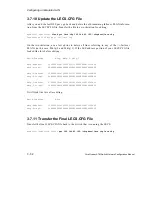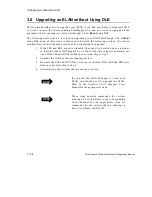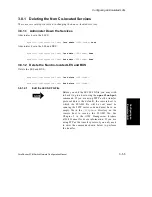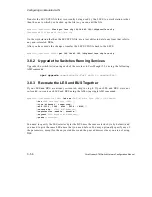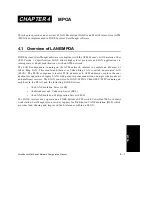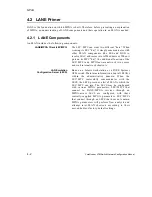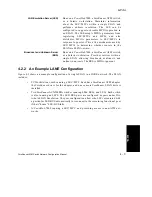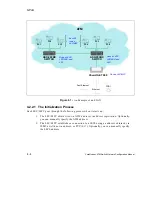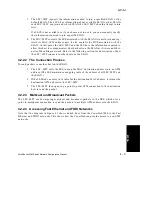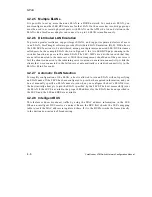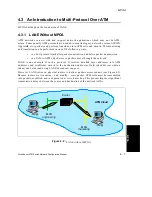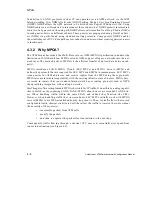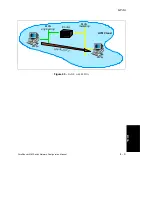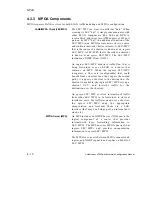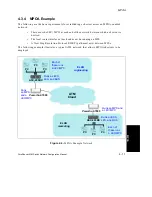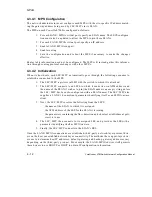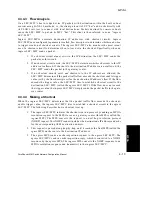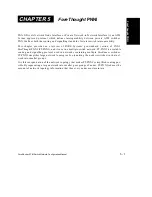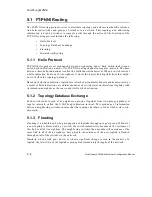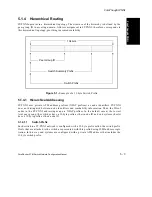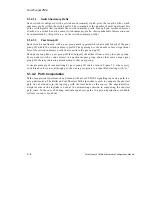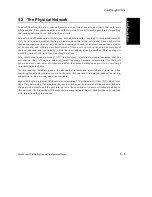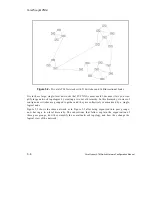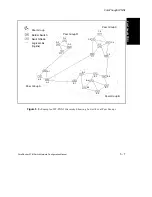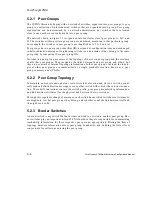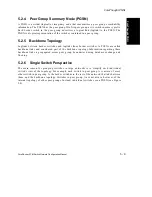
4 - 8
ForeRunner
ATM Switch Network Configuration Manual
MPOA
In addition to LANE, protocols such as IP can operate over an ATM network via the IETF
Internetworking Over NBMA Networks (ION) Working Group’s Next Hop Resolution Protocol
(NHRP). NHRP allows the ATM network to be divided into Logical IP Subnets (LISs). Using
NHRP, routers are still required to interconnect these subnets; but NHRP permits intermediate
routers to be bypassed on the data path. NHRP allows entities called Next Hop Clients (NHCs)
to send queries between different subnets. These queries are propagated using Next Hop Serv-
ers (NHSs) via paths found using standard routing protocols. Consequently, NHRP enables
the establishment of VCC data paths across subnet boundaries without requiring physical routers
in the data path.
4.3.2
Why
MPOA?
The ATM Forum developed the Multi-Protocol over ATM (MPOA) specification to address the
limitations of LAN Emulation. MPOA extends ATM support of legacy networks into the net-
work layer. The main objective of MPOA is the efficient transfer of unicast data between sub-
net(s).
MPOA introduces LANE/MPOA Clients (LEC/MPCs) and MPOA Servers (MPSs) and
defines the protocols that are required for LEC/MPCs and MPSs to communicate. LEC/MPCs
issue queries for ATM addresses, and receive replies from the MPS using these protocols.
MPOA also maintains interoperability with the existing infrastructure of routers. MPOA Serv-
ers reside in routers that run standard Internetwork Layer routing protocols such as OSPF,
thus providing integration with existing networks.
ForeThought software implements MPOA shortcuts for IP traffic. It does this by adding capabil-
ities to LANE, not by replacing LANE. LANE/MPOA client drivers are extended LANE driv-
ers. When handling traffic within the same ELAN and subnet, they function like LECs.
However, when handling traffic that crosses subnets, LEC/MPCs initially work with MPOA
servers (MPSs) to use MPS-established hop-by-hop circuits. Then, for traffic flows that exceed
configurable limits, shortcut circuits are built that allow the traffic to traverse the route without
the necessity of the router(s):
•
reassemble packets from ATM cells
•
modify the packets
•
and then re-segment the packets for transmission to the next hop
Consequently, traffic flowing through a shortcut VCC moves at essentially wire speed from
source to destination (see Figure 4.3).
Summary of Contents for forerunner series
Page 6: ......
Page 16: ...TOC 10 ForeRunner ATM Switch Network Configuration Manual Table of Contents ...
Page 20: ...LOF 4 ForeRunner ATM Switch Network Configuration Manual List of Figures ...
Page 22: ...LOT 2 ForeRunner ATM Switch Network Configuration Manual List of Tables ...
Page 30: ...viii ForeRunner ATM Switch Network Configuration Manual Preface ...
Page 144: ...3 58 ForeRunner ATM Switch Network Configuration Manual Configuring an Emulated LAN ...
Page 180: ...6 12 ForeRunner ATM Switch Network Configuration Manual ATM Forum PNNI ...
Page 220: ...9 6 ForeRunner ATM Switch Network Configuration Manual Configuring Timing ...
Page 300: ...D 24 ForeRunner ATM Switch Network Configuration Manual Configuring FramePlus Modules ...
Page 308: ...Acronyms 8 ForeRunner ATM Switch Network Configuration Manual Acronyms ...
Page 346: ...Glossary 38 ForeRunner ATM Switch Network Configuration Manual Glossary ...
Page 352: ...Index 6 ForeRunner ATM Switch Network Configuration Manual Index ...

